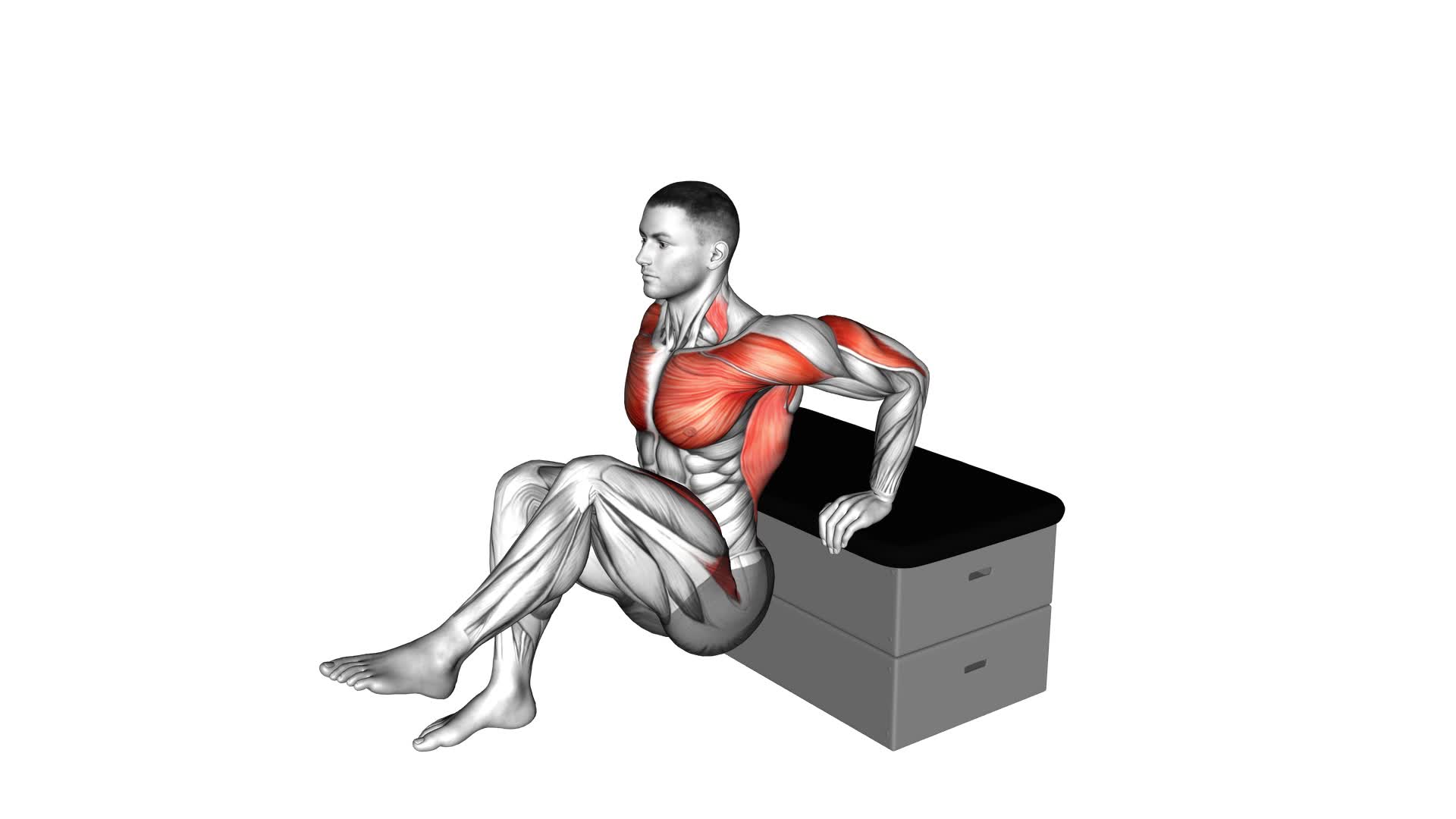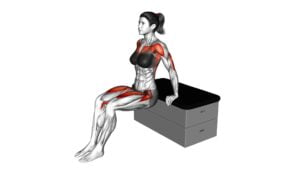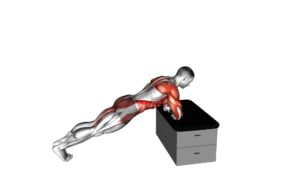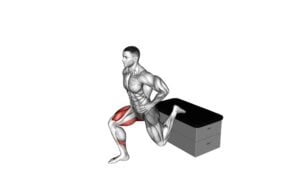Dip Leg Raise a Padded Stool Supported – Video Exercise Guide & Tips

Are you looking for a challenging exercise to strengthen your core and lower body? Look no further than the dip leg raise!
Watch This Exercise Video
This video exercise guide and tips will show you the proper form and technique, as well as common mistakes to avoid.
Whether you're a beginner or an advanced practitioner, there are modifications for everyone.
Maximize the effectiveness of this exercise with our expert tips.
Get ready to feel the burn with the dip leg raise!
Key Takeaways
- The dip leg raise strengthens the abdominal muscles and improves core strength.
- It engages multiple muscle groups simultaneously and enhances overall upper body strength.
- Proper form and technique include keeping the upper body straight, engaging the core muscles, and avoiding swinging.
- Modifications and progressions can be made to increase or decrease the difficulty level of the exercise.
Benefits of the Dip Leg Raise
One of the benefits of the Dip Leg Raise is that it strengthens your abdominal muscles by engaging them in a compound movement. This exercise is highly effective in improving core strength and increasing hip flexibility. By raising your legs while gripping the dip bars, you engage your abdominal muscles, specifically the rectus abdominis and the obliques. These muscles play a significant role in stabilizing and supporting your spine.
As you raise your legs, your hip flexors are also engaged, leading to an increase in hip flexibility. The Dip Leg Raise targets multiple muscle groups simultaneously, making it an efficient and time-saving exercise. Additionally, this compound movement helps to improve overall body coordination and balance.
Proper Form and Technique
To perform the Dip Leg Raise with proper form and technique, grip the dip bars firmly and position yourself on the padded stool for support. This exercise primarily targets the abdominal muscles, specifically the lower abs. However, it also engages the hip flexors and the quadriceps.
Here are some important tips to ensure you perform the Dip Leg Raise correctly:
- Keep your upper body straight and your shoulders relaxed throughout the exercise.
- Engage your core muscles by pulling your belly button towards your spine.
- Slowly raise your legs until they're parallel to the ground, making sure to maintain control and avoid swinging.
- Lower your legs back down in a controlled manner, maintaining tension in your abs.
Now let's address some common misconceptions about the Dip Leg Raise:
- Myth: This exercise only targets the lower abs.
Truth: While the lower abs are the primary focus, other muscle groups like the hip flexors and quadriceps are also engaged.
- Myth: Momentum is key for maximum effectiveness.
Truth: Swinging or using momentum can reduce the effectiveness of the exercise and put strain on your lower back. Focus on controlled movements for optimal results.
Common Mistakes to Avoid
Avoidance of common mistakes is crucial when performing the Dip Leg Raise exercise. By being aware of these common mistakes and following the correct technique tips, you can maximize the effectiveness of this exercise and prevent potential injuries.
One common mistake to avoid is using momentum to swing your legs up instead of relying on your core muscles. This not only reduces the effectiveness of the exercise but also puts unnecessary strain on your lower back. To avoid this, focus on engaging your abdominal muscles and lifting your legs using controlled movements.
Another mistake is allowing your legs to drop too low during the exercise. This can lead to excessive strain on your hip flexors and lower back. Instead, aim to raise your legs until they're parallel to the ground and maintain that position throughout the exercise.
It is also important to avoid arching your back or rounding your shoulders during the Dip Leg Raise. This can lead to poor posture and increase the risk of injury. Keep your back straight and your shoulders down and back throughout the movement.
Modifications for Beginners and Advanced Practitioners
Now let's talk about how to modify the dip leg raise exercise for beginners and challenge advanced practitioners.
If you're just starting out, there are techniques you can use to make the exercise easier, such as using a lower stool or bending your knees.
On the other hand, if you're more experienced, you can try variations like adding ankle weights or increasing the height of the stool to make the exercise more challenging.
Let's explore these modifications to help you progress in your fitness journey.
Beginner Modification Techniques
Start with just one repetition of the Dip Leg Raise a Padded Stool Supported exercise to modify for beginners and advanced practitioners.
Here are some modification techniques and progressions for beginners:
- Use a lower stool or bench to decrease the range of motion and make the exercise easier.
- Place your hands on the stool for additional support and stability.
- Instead of raising both legs together, start by raising one leg at a time.
- Begin with bent knees instead of straight legs to reduce the difficulty.
By incorporating these modifications, you can gradually build strength and improve your technique.
Remember to listen to your body and progress at a pace that feels comfortable for you. As you become more confident and proficient, you can gradually increase the intensity and challenge of the exercise.
Challenging Advanced Practitioner Variations
To challenge advanced practitioners, you can modify the Dip Leg Raise a Padded Stool Supported exercise with advanced modifications and progression techniques.
- Increase the height of the padded stool to make the exercise more challenging. This will require your abdominal muscles to work harder to lift your legs.
- Add ankle weights or hold a dumbbell between your feet to increase the resistance and make the exercise more challenging.
- Perform the exercise with a slower tempo, focusing on controlled movements and emphasizing the contraction of your abdominal muscles.
These advanced modifications will help to further strengthen your core and increase the difficulty of the exercise.
Now, let's move on to some tips for maximizing the effectiveness of the exercise.
Tips for Maximizing the Effectiveness of the Exercise
Maximize the effectiveness of the Dip Leg Raise exercise by engaging your core muscles throughout the movement. This will help you target your abs and hip flexors more effectively.
Here are some tips to help you get the most out of this exercise:
- Maintain proper form: Keep your back straight, shoulders down, and chest up throughout the exercise. Avoid arching your back or swinging your legs.
- Control the movement: Slowly lower your legs towards the ground, and then raise them back up using controlled movements. This will ensure that you're engaging the targeted muscles and avoiding momentum.
- Use a padded stool for support: Placing your arms on a padded stool will provide stability and support during the exercise, allowing you to focus on engaging your core muscles.
- Breathe properly: Exhale as you raise your legs and inhale as you lower them. This will help you maintain proper form and engage your core muscles more effectively.
Sample Workout Routine Incorporating the Dip Leg Raise
Get ready to incorporate the Dip Leg Raise into your sample workout routine for maximum effectiveness. To create a well-rounded workout, it's important to incorporate a variety of exercises that target different muscle groups. The Dip Leg Raise is an excellent choice for strengthening your core, particularly your lower abs and hip flexors.
Here's a sample workout routine that incorporates the Dip Leg Raise:
- Warm-up: Start with a five-minute dynamic warm-up, including exercises like jumping jacks and high knees to get your heart rate up and your muscles warmed up.
- Main Workout:
- Dip Leg Raise: Perform three sets of 10-12 repetitions. Use a padded stool for support and focus on engaging your core throughout the movement.
- Squats: Do three sets of 12-15 repetitions to target your quadriceps, hamstrings, and glutes.
- Push-ups: Complete three sets of 10-12 repetitions to strengthen your chest, shoulders, and triceps.
- Plank: Hold a plank position for 30 seconds to one minute, focusing on keeping your core tight and engaged.
- Cool-down: Finish your workout with five minutes of static stretching, focusing on the muscles you worked during your workout.
Remember to listen to your body and adjust the intensity and number of repetitions as needed. Incorporating exercises like the Dip Leg Raise into your sample workout routine will help you build strength, stability, and improve overall fitness.
Frequently Asked Questions
How Many Sets and Repetitions Should I Do for the Dip Leg Raise Exercise?
To get the most out of the dip leg raise exercise, it's important to determine the right number of sets and repetitions for you. The number of sets and repetitions can vary depending on your fitness level and goals.
It's generally recommended to start with 2-3 sets of 10-12 repetitions. As you get stronger, you can increase the number of sets or repetitions.
Remember to listen to your body and make any necessary modifications to suit your needs.
Can the Dip Leg Raise Exercise Help Me Lose Belly Fat?
The effectiveness of the dip leg raise exercise for overall weight loss is dependent on various factors.
While this exercise can help strengthen your core muscles, it may not directly target belly fat reduction.
To maximize effectiveness for belly fat reduction, consider incorporating a combination of regular cardio exercises, a balanced diet, and other targeted abdominal exercises.
Is It Necessary to Use a Padded Stool for the Dip Leg Raise Exercise?
Using a padded stool for the dip leg raise exercise isn't necessary, but it does offer some benefits. The stool provides support and stability, making it easier to maintain proper form. Additionally, it can reduce strain on your lower back and allow you to focus more on engaging your core muscles.
However, if you don't have a padded stool, you can still do the exercise by using a bench or any other stable surface. Just be sure to modify as needed for your comfort and safety.
Can I Perform the Dip Leg Raise Exercise if I Have Lower Back Pain?
If you have lower back pain, it may not be advisable to perform the dip leg raise exercise. This exercise puts strain on the lower back, which can exacerbate your pain.
However, there are alternative exercises that can target the same muscle groups without putting strain on your lower back.
It's important to prioritize your health and consult with a professional to find exercises that are safe and beneficial for your condition.
Should I Incorporate Other Exercises Along With the Dip Leg Raise for Better Results?
To achieve better results with the dip leg raise exercise, it's recommended to incorporate other exercises into your routine.
Adding cardio workouts like running or cycling can help increase overall fitness and burn more calories.
Additionally, focusing on maintaining proper form during the dip leg raise is crucial for maximizing its benefits. Remember to engage your core, keep your back straight, and avoid any jerking or swinging movements.
Conclusion
In conclusion, the dip leg raise is a highly effective exercise for targeting the lower abdominal muscles. It offers numerous benefits, including improved core strength, stability, and flexibility.
By maintaining proper form and avoiding common mistakes, you can maximize the effectiveness of this exercise. Whether you're a beginner or an advanced practitioner, modifications can be made to suit your fitness level.
Incorporating the dip leg raise into your workout routine can help you achieve your fitness goals.

Author
Years ago, the spark of my life’s passion ignited in my mind the moment I stepped into the local gym for the first time. The inaugural bead of perspiration, the initial endeavor, the very first surge of endorphins, and a sense of pride that washed over me post-workout marked the beginning of my deep-seated interest in strength sports, fitness, and sports nutrition. This very curiosity blossomed rapidly into a profound fascination, propelling me to earn a Master’s degree in Physical Education from the Academy of Physical Education in Krakow, followed by a Sports Manager diploma from the Jagiellonian University. My journey of growth led me to gain more specialized qualifications, such as being a certified personal trainer with a focus on sports dietetics, a lifeguard, and an instructor for wellness and corrective gymnastics. Theoretical knowledge paired seamlessly with practical experience, reinforcing my belief that the transformation of individuals under my guidance was also a reflection of my personal growth. This belief holds true even today. Each day, I strive to push the boundaries and explore new realms. These realms gently elevate me to greater heights. The unique combination of passion for my field and the continuous quest for growth fuels my drive to break new ground.







